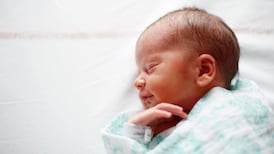The Greens have set out prudent yet cohesive policies, writes Marc Coleman, Economics Editor Economic analysis
Radical you might say, controversial even. However you describe their manifesto, there is little doubt in the mind of this writer at least on one thing. For its cohesiveness and prudence, yesterday's Green Party manifesto was the most impressive in this campaign so far.
Perhaps this should have been guessed, given where the presentation occurred - in the former Bank of Ireland building, now a restaurant, on Dublin's Dame Street, across the road from the Central Bank. There, dressed in neat banker suits, Trevor Sargent, Dan Boyle and Eamon Ryan set out their policies.
As the main author and party finance spokesman, Dan Boyle, began talking, I thought I was attending a Department of Finance briefing when he explained why the Greens had taken more recent and lower forecasts for the economy as their benchmark for policy planning.
"In line with economic analysts' and financial institutions' recent reports, we are assuming that the likely growth over the next five years is in the region of 4 per cent . . . there is a responsibility even in the context of the general election to be honest with the electorate."
Tax forecasting is such that small differences in assumed growth rates can add up to big differences in the tax take over five years. Between 2008 and 2012, Fianna Fáil and the Fine Gael/Labour alliance assume growth of 4.5 per cent in real and 7 per cent in nominal terms. The trouble is the Economic and Social Research Institute (ESRI), the Central Bank, Davy Stockbrokers and most lately AIB have forecast that growth will fall to 4 per cent or less next year.
Assuming 4 per cent real and 6.5 per cent nominal growth, the Greens assume annual tax revenue will reach €69 billion by 2012. The 4.5 per cent assumption turns into a take of €71 billion.
Boyle's justification of the lower assumption would have done a central banker proud: "The Irish economy has been inflated by some factors that may not exist in the medium term."
But it leaves a €3 billion shortfall, and to fill it the Greens have taken another bold step: they have promised to raise taxation in certain areas.
The biggest take, €835 million, will come from increasing the capital gains tax (CGT) rate from 20 to 25 per cent. Labour toyed with this idea, but it was dropped when the joint economic programme was formed with Fine Gael. A carbon levy, due to raise €518 million, would go down like a lead balloon with Fine Gael and Fianna Fáil (although Fianna Fáil once favoured it).
Together with restoring bank levies, slapping a tax on unused sites and ending property-based tax reliefs, these measures provide another €2 billion in revenue by 2012. To those who say these measures would harm the economy, Eamon Ryan yesterday cited evidence to the contrary - from the ESRI no less.
What they take with one hand, the Greens intend to give back with the other, and their programme of tax cuts is different from other parties. In a package that will lower overall revenues by €2.7 billion by 2012, the 21 per cent and 13.5 per cent VAT rates will fall by one percentage point. Employers' PRSI will fall by a half a percentage point and tax credits and bands will be index-linked.
They promise to introduce refundable tax credits for those whose earnings are too low to avail of the existing system's full benefits and they would abolish stamp duty for those trading down.
How compatible are these policies with prospective coalition partners? The introduction of carbon levies and raising the CGT rate would be sticking points for Fianna Fáil or Fine Gael. The proposed tax on site values will also cause problems. But these policies are the party's raison d'être. On one point, however, they look like holding hostages to fortune. If, in the negotiations to come, they insist on ruling out completing motorways between Dublin and Galway, they may find themselves on a road to nowhere.






